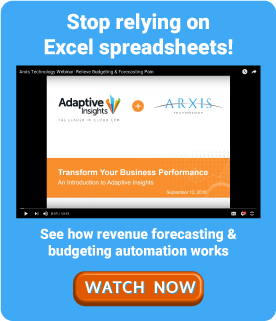Do you go to a gym or enjoy an occasional run around the neighborhood or park? Even if you don't, you might have noticed that a lot of physical fitness enthusiasts carefully track their progress, keeping tabs on everything from the number of weight lifting reps they could perform in a given week to their average heart rate during cardio exercises.
Modern technology has made such data collection easier than ever before. Think of all the wristbands, watches and mobile apps out there that can be used throughout the day to pull in and then make sense of data points such as the number of steps taken or total calories burned versus recommended baselines. A 2015 study from Parks Associates estimated that the fitness tracker market would expand from $2 billion in 2014 to more than $5 billion by 2019.
Active calories, steps, etc. are basically key performance indicators for fitness, even if virtually no one calls them that. The similarities between physical activity monitoring, on the one hand, and professional budgeting and forecasting on the other don't stop at their shared affinity for metrics. Both have also benefited from the spread of increasingly capable software that has made it possible to drill down into numbers that once would have escaped notice.
Why finance organizations still overlook essential KPIs
For accountants and their teams, getting a handle on the most relevant KPIs  isn't as simple as fastening a new FitBit or Apple Watch to their wrists. Indeed, the lifecycles of their financial processes often involve complex, difficult journeys from reactive to proactive practices, with many changes along the way in tools, tactics and strategies. Let's look at what ground these lifecycles typically cover and how it's easy for KPI tracking to get lost in the shuffle:
isn't as simple as fastening a new FitBit or Apple Watch to their wrists. Indeed, the lifecycles of their financial processes often involve complex, difficult journeys from reactive to proactive practices, with many changes along the way in tools, tactics and strategies. Let's look at what ground these lifecycles typically cover and how it's easy for KPI tracking to get lost in the shuffle:
Transactions and control
This beginning phase is a bottleneck from the word "go," if only because so many organizations still rely on spreadsheets to keep track of information from multiple sources. Microsoft Excel has its use cases, but performing complex data consolidation for efficient planning is not one of them. It takes time to create and reconcile these spreadsheets, leaving little left over for analysis of KPIs.
Control and reporting
At this stage, the ad hoc manual processes for managing transactions may have given way to more formal actions that focus on individual business units and GAAP. Historical data may also be subjected to basic analysis. However, this undertaking, like other parts of the finance lifecycle, is still largely reactive and as such limits the scope of the organization's budgeting and forecasting activities. Hitting short-term deadlines still takes priority over long-term planning and integrating KPIs.
Reporting and analysis
The next level up shows how firms can finally break out of this reactive mindset. Sophisticated forecasting techniques come to the fore and provide a sound basis for putting plans into action. Not only can an organization at this stage of maturity come up with goals for its financial processes, it can also use those aspirations to inform and improve its day-to-day operations. Driver-based budgeting and advanced reports are common approaches in this phase, helping everyone to better see how the organization is doing relative to its KPIs.

What goes into creating and tracking a good KPI?
Strategic business partnering
After reaching this plateau, an organization has shed the constraints of reactive budgeting and forecasting. Information sharing is both easy and commonplace, thanks to on-demand access to data via advanced business intelligence solutions such as Adaptive Insights. KPI oversight and long-term planning are front and center within the organization's strategy.
Regardless of what part of this four-phase lifecycle they are at, companies are constantly redefining their KPIs. Like a workout plan or a set of personal goals, KPIs provide a framework for understanding success. However, not all organizations are equally capable at managing their KPIs, especially at the earlier stages of the above lifecycle. Common obstacles include:
- Not enough time: With spreadsheets dominating the proceedings (as they do at the "transactions and control" stage), KPIs rarely come up for consideration.
- Organization silos: Without comprehensive organization-wide BI solutions in place, accounting and IT may take different routes, with the latter tending to KPIs.
- Lack of a single version of the truth: It's vital that multiple data sources be formed into an agreed-upon version of the truth, but manual, reactive and spreadsheet-based processes make this difficult.
- No data to work with: Firms that are not data-driven may be leaving money on the table by not tracking KPIs.
Getting on the right track with KPIs
What goes into a good KPI? For starters, it needs to be relevant to key stakeholders, mappable to business outcomes and verifiable by the available data. Let's look at a few steps that can get you on the road to better KPI management:
Consider the audience
Just as a runner would benefit more from seeing the distance covered in a day than she would from knowing what phase the moon was in on that afternoon, members of an organization will get the most out of the KPIs that speak directly to their respective roles. For example, finance will want to stay on top of billings paid versus billable hours and operating income. Meanwhile, executives will need to see numbers about the current sales pipeline as well as information about the project backlog.
"A useful KPI is tailor-made for its audience."
A useful KPI takes its audience into account, whether that means providing data on profitability or insight into inventory and distribution. It could even do something such as offer information about how well students were performing in online courses.
Work backward to get the best results
In some games - such as ones involving collectible cards, e.g. "Magic: The Gathering" or "Yu-Gi-Oh!" - it is a good idea to first consider what the ideal game state would look like before you even begin building a deck. That way, you can make your deck-building decisions and card selections with that end goal always in mind. A similar approach is useful when formulating KPIs.
Ask yourself: What are my most important business outcomes? Maybe they include customer retention, operational efficiency and return on investment. However, these are all top-level goals that can only be achieved through specific actions rather than by sheer force of will. KPIs can play an important role here by being mapped directly to outcomes. For instance, earnings before interest, taxes, depreciation and amortization, or EBITDA, can tell you a lot about where you are with your revenue targets and where you could make improvements.
Create the proper context
A figure in isolation tells you nothing - it needs context and benchmarks. The numbers posted by one of your business units become much more informative when compared with other divisions or past fiscal periods, for example.
Beyond these internal benchmarks, you can look outside the organization to get a feel for how your performance stacks up. Properly applied, your KPIs will tell you how you are doing relative to the industry at large or what analysts expect of organizations with similar characteristics.
These three steps are just a few ways to move toward superior KPI management. Ultimately, investment in the right tools, such as Adaptive Insights instead of spreadsheets, and proper sharing of data across the organization (so that it becomes an easy self-service process for stakeholders) make KPI creation and tracking a productive undertaking for businesses.




